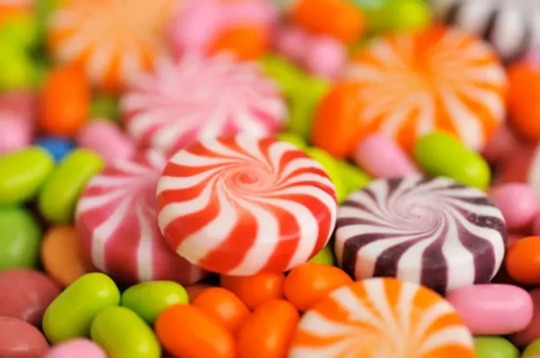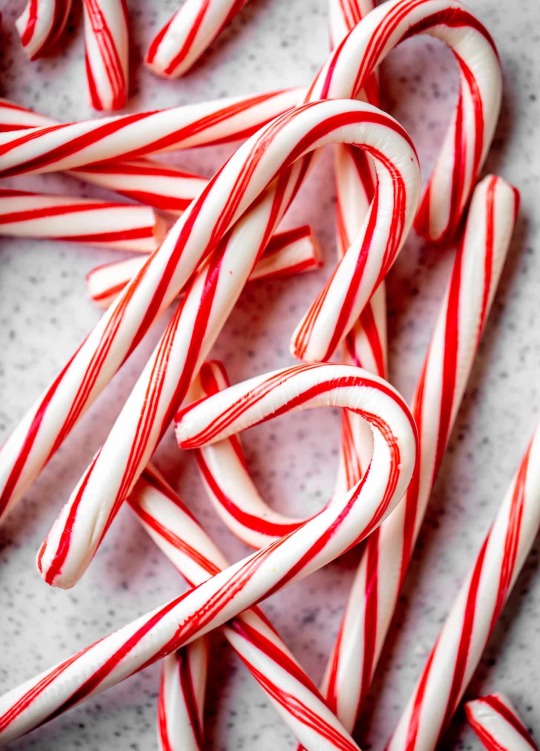#NationalCandyDay
Explore tagged Tumblr posts
Text
Happy National Candy Day to the fans in the crowd celebrating today! What is your favorite candy on your college campus, and a cool fact about it? Join us on FreezeCrowd.com to freeze with a favorite candy. ❤️🍬🍫🍭❄️
1 note
·
View note
Text
0 notes
Text


Humphrey Bogart and Natalie Wood for #NationalCandyDay
47 notes
·
View notes
Text

[191103] lalalalisa_m: The only way to celebrate #NationalCandyDay tomorrow… 🍬🖤💕 Playing #CandyCrushFriends of course on Samsung Galaxy Store! 🍬🖤💕
7 notes
·
View notes
Text


Happy National Candy 🍬 Day! #food #foodporn #candy #NationalCandyDay
3 notes
·
View notes
Text
It’s National Candy Day!
The history of #candy dates back to the caveman who created the idea of candy by eating honey combs and honey. Candy can be traced back as far as 1500 BC to the ancient Egyptians who used honey and made candy by adding figs, nuts, dates and spices.
In the late 13th century, Middle English first began using the word candy. Borrowed from the Old French cucre candi, it is derived in turn from Persian Qand and Qandi, cane sugar.
People use the term candy as a broad category. We treat candy bars, chocolates, licorice, sour candies, salty candies, tart candies, hard candies, taffies, gumdrops, marshmallows and much more as candy.
🍭🍫🍬 #NationalCandyDay #FoodOfTheDay @NobertSales #NobertSales #FoodSales #WeKnowFood #FoodConsultant #FoodDude #FoodService #Food #FoodServiceSolutions






1 note
·
View note
Text

It’s #NationalCandyDay!
#candy
1 note
·
View note
Text

🍬 Happy #NationalCandyDay! 🍬 Celebrate with your favorite sweet treats and indulge in the joy of candy—whether it's classic chocolates, sour gummies, or something totally unique! What's your go-to candy? Share below! 👇
Usascripthelpers.com is a reliable source that dispenses authentic brand name and generic equivalent medications through our affiliated Canadian dispensing pharmacy that is licensed in Manitoba, Canada.
#SweetTooth #CandyLovers #ChocolateAddict #Sweets #CandyCelebration #TreatYourself #SugarRush #CandyCravings
#SweetTooth#CandyLovers#ChocolateAddict#Sweets#CandyCelebration#TreatYourself#SugarRush#CandyCravings
1 note
·
View note
Photo

🍭🏡 Searching for your dream home is like finding the sweetest treat on #NationalCandyDay! 🏡🍬 Let's navigate the real estate journey together, one delightful step at a time.🏠💫 #HomeSweetHome #HouseHunting
0 notes
Photo

Happy National Candy Day- 11-4-2023 Candy has been a consistent source of happiness, comment below your favorite type of candy! #Divabandits, #NationalCandyDay, #Candy
0 notes
Photo

#kimickaphotoaday November Day 4: Candy #NationalCandyDay 🍫🍬 The first Christmas candy of the year! The new Sugar Cookie Hershey’s Kisses! They’re very tasty! Lol. #candy #chocolate #hershey #hersheyskisses #sugarcookiekisses #christmas #christmascandy #hersheyschocolate #hersheyschristmas #yum #food #sugarcookie #fun #photo #photoaday #photoadaychallenge https://www.instagram.com/p/CHL6zjpn5eq/?igshid=iwwukcozql5x
#kimickaphotoaday#nationalcandyday#candy#chocolate#hershey#hersheyskisses#sugarcookiekisses#christmas#christmascandy#hersheyschocolate#hersheyschristmas#yum#food#sugarcookie#fun#photo#photoaday#photoadaychallenge
7 notes
·
View notes
Photo

Just when you thought it was safe to get rid of that bag of leftover Halloween candy, here comes National Candy Day. As best we can tell, the November 4th holiday of National Candy Day is yet another made-up internet holiday with no apparent provenance (there have apparently been 8,136 Presidential proclamations of public observances since Washington, most now defunct, but none of them seem to be about candy). But it was almost a thing. In 1916, the National Confectioners Association declared that the second Saturday of October would be Candy Day (candy wasn’t associated with Halloween in the United States until the 1950s). Not for the crass capitalist excuse of pushing candy on the public of course, but in pursuit of the noble goal of celebrating “good will, appreciation and good fellowship”.
Behind the scenes, of course, hidden in the pages of trade journals like Candy and Ice Cream, Association members were a little less noble-minded, telling their readers in the industry that “It's simply asking you if you want to make some extra money, and if you do, you are requested to go ahead and push this "Candy Day" idea”. While the marketing ploy had some initial success, it was short lived, as sugar rationing during World War I made the corporate holiday unsustainable. A second attempt after the war, however, launched in 1921 under the rebranded name of “Sweetest Day”, this time cloaked in twice the syrupy layers of sentimentality (and a bogus origin myth that some publishers repeat to this day), also failed to stick in the molars of popular culture. Except, that is, for some communities around the Great Lakes. Fowler’s Chocolates in Buffalo, New York has continued the tradition of Sweetest Day celebrations, as has the Sanders Candy Company in Detroit and confectioners in Cleveland. For these Midwestern sugar-fiends, Hallmark also has a line of Sweetest Day cards, launched in 2006.
This image, created by the DuPont Company, was a 1950 advertisement that ran in popular publications like The Saturday Evening Post, and traded on America’s love affair with candy to sell cellophane. This item is part of the Hagley’s collection of E.I. du Pont de Nemours & Company Advertising Department records (Accession 1803). You can view more material from this collection online now by visiting its page in our Digital Archive.
#National Candy Day#Candy Day#NationalCandyDay#CandyDay#November 4#made up holidays#National Confectioners Association#Sweetest Day#SweetestDay#DuPont#better things for better living#cellophane#1950s#1950s advertising#vintage advertising#delicious energy food#candy#sweet tooth#enjoy some candy every day#or maybe not
43 notes
·
View notes
Photo

{ #candycrushfriends } || source: lalalalisa_m
1 note
·
View note
Photo

Happy National Candy Day from me & my BUDS😉😋 #nationalcandyday #truerreviewing #nycacc #GalaxyBuds #GalaxyBudsInsiders #SamsungGalaxyBuds #Samsung https://www.instagram.com/p/B4cXxnJlM3s/?igshid=1nmbeht81ncut
1 note
·
View note
Photo

#nationalcandyday 😁 https://www.instagram.com/p/B4cKHGvJb8r/?igshid=1krs5mh2dgrms
1 note
·
View note
